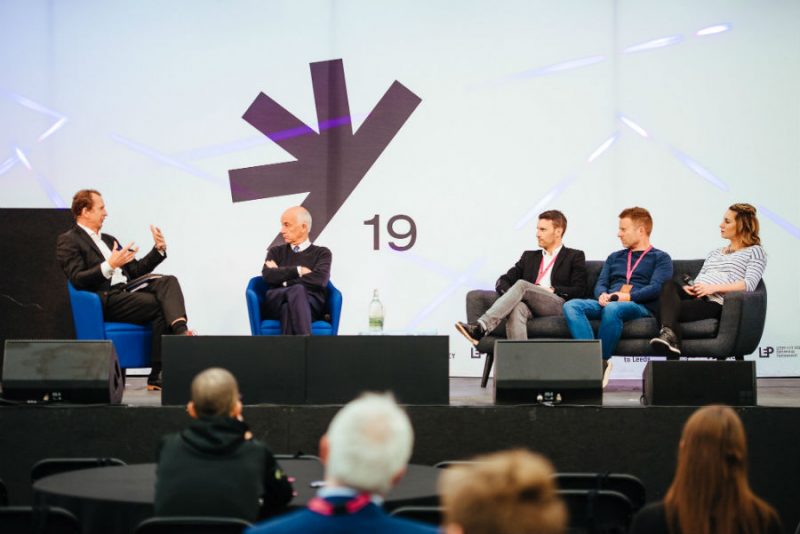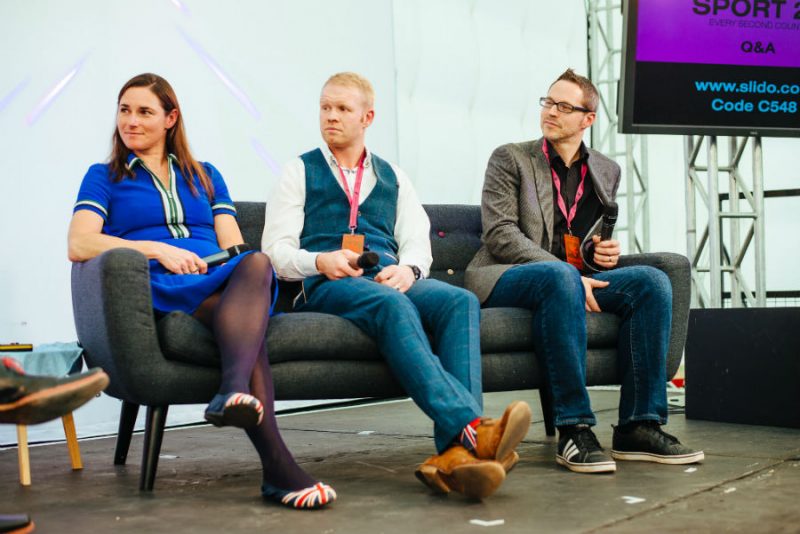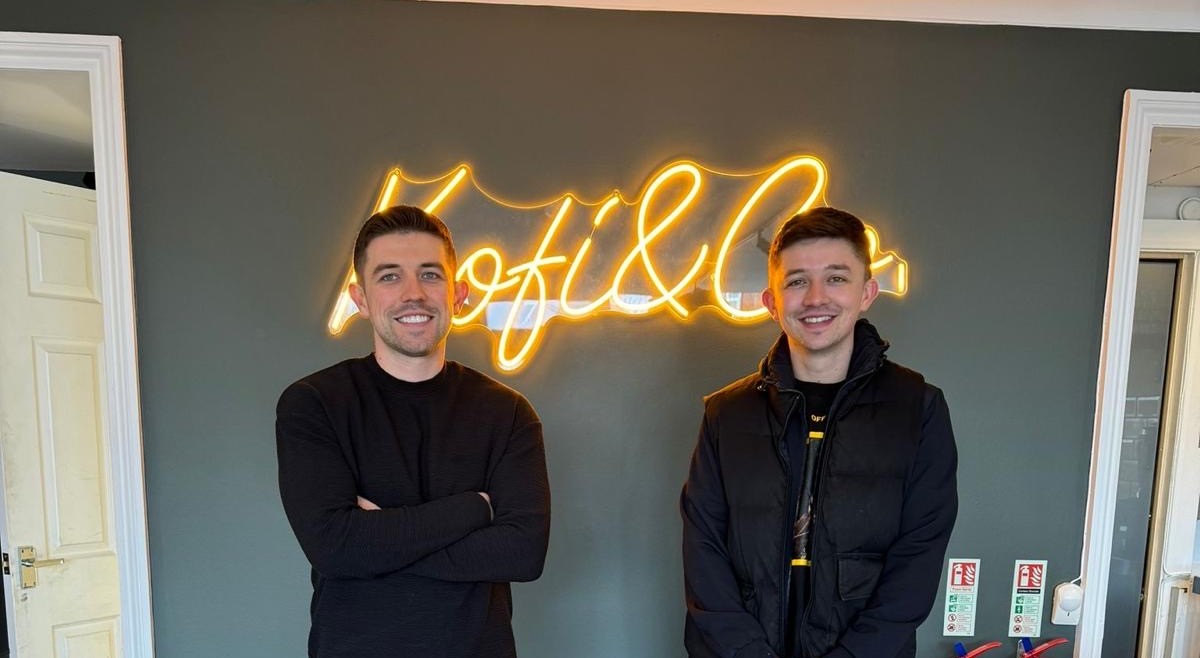After speaking to Amy Williams MBE, I was intrigued to learn more about how technology is used in sport to enhance performance. So, on behalf of Leeds Living, I attended ‘Sport 2.0’, one of the events being held as part of the Leeds International Festival.
This full-day conference, hosted by Professor Greg Whyte, promised to take attendees on a journey of exploration, investigating the various ways in which technology is helping to make the difference between winning and losing for the world’s best athletes, and it did not disappoint.
 Activities kicked off at 10 am with a welcome from Professor Greg Whyte. Greg also took some time to introduce the morning’s speakers, the first of whom was David Elleray MBE.
Activities kicked off at 10 am with a welcome from Professor Greg Whyte. Greg also took some time to introduce the morning’s speakers, the first of whom was David Elleray MBE.
David Elleray MBE
David, a prominent former football referee who has held the position of Technical Director at the International Football Association Board (The IFAB), the ‘independent guardian of the Laws of the Game’, told the story of technology in football. David explained that the IFAB is conservative and has traditionally been reluctant to make changes that may affect the game. However, owing to a growing need for fast and accurate referee decisions, and the requirement to deal with obvious errors of judgement, in the past 10 years technology has been embraced.
Examples of technology use in football include Electronic Performance Tracking Systems (EPTS) which collect data during training and gameplay, and the use of Video Assist Referee (VAR). Future possibilities include the use of GPS and hot spot technology (already used in cricket) to accurately identify and classify fouls.
Barry McNeill
Barry is the CEO of Catapult Elite, an intelligence company based in Harrogate. In his engaging talk, Barry spoke about the journey that the industry has taken over the past two decades, in terms of improving data collection and analysis techniques. Providing a range of personal experiences in which he worked with leading sports teams to help them to get the most from technology, and the data that they gather in order to improve player wellbeing and performance, Barry helped us all to understand the potential uses of technology in sports.
Barry went on to describe how technology has been used by a range of professional, and amateur teams to enhance performance. For example, Barry described how Catapult technology has helped to develop Rugby World Cup winners, to improve the efficiency of Christian Ronaldo’s gameplay (for example by reducing his average touch number from 7 to 5) and also helped Leicester City to become unlikely winners of the English Premier League. Barry finished by saying that player and coach buy-in and understanding with technology, is essential to ensure the best results.
Tom Williams
Talk then turned to Parkrun, with a motivating talk from Tom Williams, the global CEO of Parkrun. Parkrun is a charity that started in 2007, with the aim of enabling people to take part in free timed 5km runs in parks across the UK, and eventually the world. Since its humble beginnings, Parkrun has become a global phenomenon, with over a quarter of a million runners taking part in 1,500 events spread over 20 countries every weekend. Tom described how technology has enabled Parkrun to grow. For example, the development of a timing and scanning app has given people in remote places the ability to set up runs, without the need for complex or costly equipment.
However, Tom emphasised that using technology is not always the answer. He exemplified this by providing an anecdote of his father volunteering at an event, counting in coins, and gaining friends. This would not have been possible if the process had been replaced by technology.
Tom described some of the challenges Parkrun face in the future and how technology may help overcome them, but finished his talk by stating that technology is great, but for Parkrun it will only ever be used if it enhances wellbeing and empowers human interaction.
Amy Williams MBE
Vancouver 2010 Olympic skeleton champion Amy Williams took the stage and reiterated many of the key points that she brought up in the interview conducted on behalf of Leeds Living a couple of months ago. However, she also went into more detail about how technology helped her and fellow athletes to train hard, and perform at their best on race day.
Amy explained that wind tunnels had been used by the GB team in the lead up to the winter Olympics to understand airflows, to develop the most effective positions on the board, and to enhance kit development.
She finished by explaining that although technology is enabling athletes and coaches to improve, it must not be totally relied upon since athletes must continue to work hard and must be able to listen to their gut.

Q&A session 1
Before breaking for lunch, Greg Whyte hosted a Q and A session with the morning’s speakers. Questions were shared by the audience via an online application, which Greg then relayed.
To start, the speakers were asked about the volume of data that is being produced by technology, and how best to deal with it. Amy responded first by explaining that it is important not to get overloaded by data and that athletes should always focus first on getting the basics right, such as nutrition and recovery. Amy concluded by saying that technology is there to enhance safety and to enable athletes and coaches to achieve 1% gains. Tom agreed and explained that some technology is developed by clever people to provide solutions where solutions are not needed.
Talk then turned to how technology could be used to enhance the viewing experience for spectators. Barry took the lead on answering this question and suggested that although data is interesting for athletes and coaches, it may not be so interesting for the audience. He did, however, suggest that apps could be developed that would allow those interested to get a dual screen experience and see how athletes are working in real time. In contrast, David explained that enabling spectators to see VAR in real time, whilst in the stadium, may lead to unexpected behavioural responses such as rioting if members of the crowd disagreed with decisions made by referees. This, he explained, highlights the importance of considering cultural and sport-specific factors, when giving the go-ahead for technological changes.
The final question of the morning’s Q&A was regarding the ethics of data gathering in sport. Tom explained that GDPR has improved transparency but has caused some challenges for Parkrun, for example in terms of having to comply with individual requests for their data to be removed from Parkrun systems, newsletters and online communication. Barry explained that ensuring data gathering and sharing is ethical is a top priority for Catapult. The company own rights to share data to enable coaches to compare with others, but the data is always anonymised before being shared to protect the privacy of individuals.
Lunch and networking
Lunch was served at 1 pm and provided delegates and speakers with time to network. I took it as an opportunity to ask more questions, and to learn more about how technology is being used to enhance individual performances.

Sam Boatright AKA ‘The Epic Runner’
Sam, a full-time maths teacher-come-endurance enthusiast, kicked off the afternoon session of the conference. Sam started by providing the audience with a description of his previous challenges, including completing 50 marathons in 50 days and cycling over 240 miles in 24 hours on a watt bike.
Sam went on to describe his upcoming challenge, which has been dubbed as the toughest triathlon in the world, and includes cycling and running from Lands End to John O’Groats and swimming across the Channel. Despite the massive toll that such challenges place on the body, Sam explained that he does not rely heavily on technology owing to the cost. At the moment, he only uses a standard GPS watch for running, a watt bike in his local gym for cycle training, and Zwift, an app that allows him to compare his performance with elite athletes.
Sam explained that although technology can aid training load monitoring, he argued that epic endurance challenges, such as those that he completes, require incredible amounts of mental determination, which he thinks cannot be enhanced by the use of technology. Sam concluded his inspiring talk by encouraging the audience to remember that nothing is impossible, and we should all be aiming to make ourselves proud.
Pete Andrews
Pete, who has over 20 years’ experience of working in sports production covering top sporting events, was recently appointed as Head of Sport at Channel 4. He took to the stage and started his talk by describing his excitement about Channel 4’s imminent move to Leeds, a change that he thinks will help to increase the diversity of coverage and improve the content on the channel.
He described how over 200 jobs will be on offer, and that the broadcaster will be on the lookout for new material from local producers. Pete then turned to how technology is being utilised in sports broadcasting to enhance the spectator experience. An example that he is hoping will be used in the broadcasting of the Tokyo Paralympics, for which Channel 4 is the official broadcaster, is the use of individualised camera technology, which will allow spectators to see events from the athlete’s perspective.
Pete concluded by explaining that as is the Channel 4 way, he is looking to do things a little differently, and as such is always open to new and exciting ideas that will ensure that Channel 4 promotes the idea that ‘anything is possible’.
Dame Sarah Storey
Sarah is Britain’s most decorated para-athlete, with 29 world titles and 75 world records across two sports. Sarah took to the stage to discuss how technology has been used within Paralympic sport in the past and how current technological advancements are helping para-athletes to reach new heights. Sarah provided examples of how technology helps her in her career, including the use of a fin in swim training to balance out the load between her right and left sides, and the addition of a tailored handle attachment on her bike which supports her smaller left hand, and improves balance and safety.
Sarah explained how in addition to improving safety and training efficacy, technology has enabled para-athletes to engage in sports like never before, thanks to individually tailored technologies and equipment. Sarah explained how technology is helping athletes and their coaches to prepare for the Paralympics in Tokyo 2020, for example, video technology is helping para-swimmers to improve their underwater trajectories, which could shave off time at the start of a race. Sarah concluded by stating that sharing best practice and technological innovations between sports has enabled learning and athlete development and will continue to do so.
Q&A session 2
The day concluded with a Q&A session amongst the afternoon speakers, Sam, Pete, and Sarah. Greg again hosted the session and began by asking Sam what had inspired him. Sam began by explaining that he completed challenges in order to inspire others, to remind people about the sacrifices that those in the Armed Forces make, and to remember friends who had been lost in the war.
Questioning then moved to whether there is a tipping point in sport whereby it detracts from what sport is all about. Sarah explained that sport should always be about having fun and keeping healthy and that there is scope for technology to take over. However, she explained that in parasport, technology is highly regulated and that although some technological innovations are helping rich nations to reach potentially unfairly greater heights, technology is also helping athletes to stay safe and train efficiently.
Finally, Sam was asked why, despite the potential benefits of technology, he does not use that much in his challenges. He explained that in addition to the mental toughness that is needed and which cannot be improved by technology (yet), tech is simply too expensive for him. He went on to say that he is already working two jobs, getting up a 4 am to train, and has to juggle this with family commitments, so accessing technology is just a step too far at the moment. He concluded by stating that if he were given some funds, then he would buy a watt bike for his home, which would make it easier to train and juggle his commitments.
To conclude
The event was engaging, interesting and highly thought-provoking. For me, the key message of the day was that technology should be embraced in sport, as it is enhancing performance and will continue to do so, and push athletes to the edge of human endeavour, in addition to enhancing spectator viewing experiences. But, this comes with a caveat, which is that technology must never detract from what sport is – fun, enjoyable and healthy – or detract from the incredible feats that athletes and their teams achieve through sheer hard work and gritty determination.
All photographs by Ben Bentley. Provided by Chapter 81.



